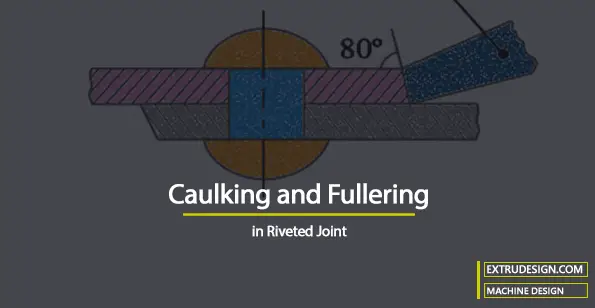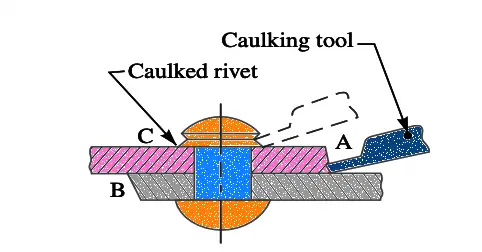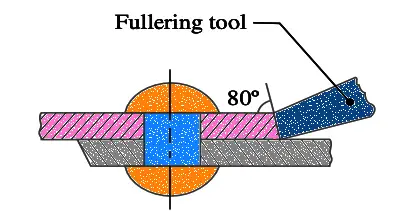In the previous article, we have discussed the Riveted joint method, Rivethead types, and the materials used for the Rivets according to the Indian Standards. In the Riveting methods, it is essential for some applications to make a leak-proof Riveted joint. Those applications are Boilers, air receiver tanks, and ship hulls. In order to achieve a leak-proof joint for such applications, the Caulking and Fullering processes are employed in Riveted Joint. Let us understand how Caulking and Fullering will be done in Riveted Joint to make it leak proof.

Claulking in Riveted Joint

As we mentioned above, this claulkng process is used to make the Riveted joint leak proof. In this process, there a narrow blunt tool called Claulking tool which is about 5mm thick and 38mm in breadth as shown in the above figure used for this process.
- The edge of the tool is ground to an angle of 80°.
- The tool is moved after each blow along the edge of the plate, which is planed to a bevel of 75° to 80° to facilitate the forcing down of edge.
- It is seen that the tool burrs down the plate at A in as shwon in the above figure forming a metal to metal joint.
- In actual practice, both the edges at A and B are claulked.
- The head of the rivets as shown at C are also turned down with a caulking tool to make the Riveted joint steam tight.
- A great care is taken to prevent injury to the plate below the tool.
Fullering in Riveted Joint

- A fullering process is shown in above figure.
- A more satisfactory way of making the joints staunch is known as fullering which has largely superseded caulking.
- In this case, a fullering tool with a thickness at the end equal to that of the plate is used.
- This Fullering tool is used in such a way that the greatest pressure due to the blows occur near the joint, giving a clean finish, with less risk of damaging the plate.
Conclusion
Caulking and Fullering processes are employed in Riveted Joint to make the joint leak proof for the applications such as Boilers, air receiver tanks, and ship hulls. Let us know what do you think about this article in the comment section below.

Leave a Reply